This Rava cake or Suji ka cake is a ridiculously easy recipe that even a beginner can make. Also called as semolina cake, this Eggless Recipe is made with fine rava, condensed milk, coconut, milk and flavorings. This recipe comes from the Goan cuisine and is also called as Baath cake.
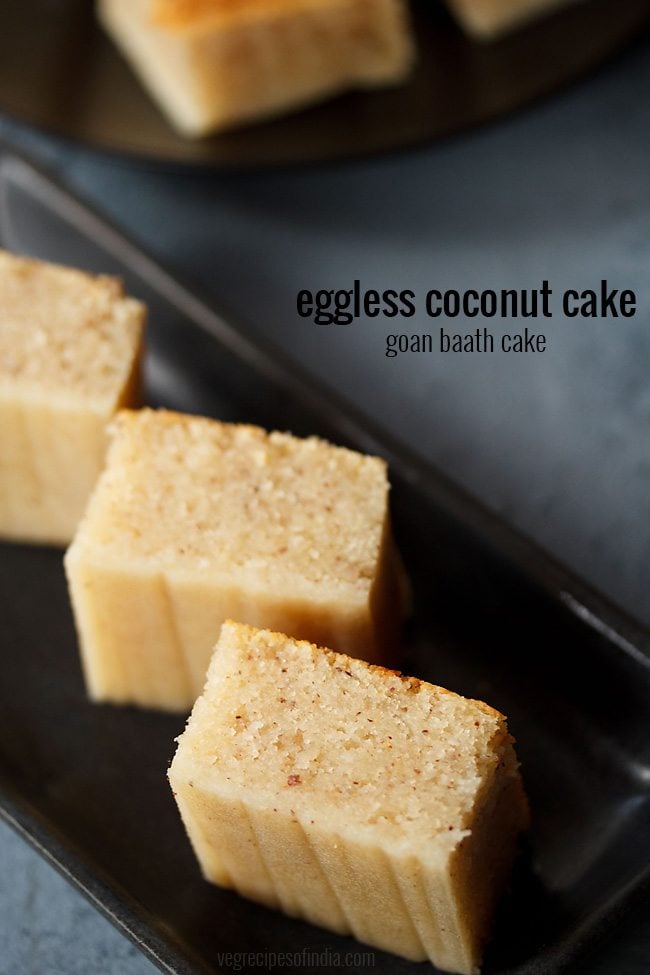
Table of Contents
About This Rava Cake
There are many ways rava cake is made. This recipe is a simple, easy and one bowl cake. There is no flour used in this cake. So you don’t have to worry about your cake becoming dense or doughy.
This rava cake has a different texture and taste than cakes made with all purpose flour (maida) or whole wheat flavor. The rava cake is moist, slightly dense in texture and has a lovely aroma of coconut.
This suji cake uses fresh coconut, but you can also use desiccated coconut. Do use fine variety of rava or semolina in the recipe. A slightly coarse variety will also do, but then you may need to add some more milk to get the right batter consistency. The addition of fresh coconut gives a lovely aroma to the cake.
This recipe is easy, but there is a waiting time. All the ingredients need to be soaked and kept in the fridge for a minimum of 1 to 2 hours or overnight. Then later, you can bake the semolina cake.
This rava cake is made without eggs. Here sweetened condensed milk is used as a substitute for eggs. The recipe was requested by a few readers. So sharing the recipe. This is one of the simplest and easy cakes that one can make.
Even someone who does not have experience in cooking or baking, can easily make this suji ka cake. For beginners in baking, this is an easy recipe to begin with.
Baath cake is a specialty in Goa and sold in bakeries too. It is also known as Batega or Baathica. I have also shared recipe of Cucumber Cake from the Goan Cuisine.
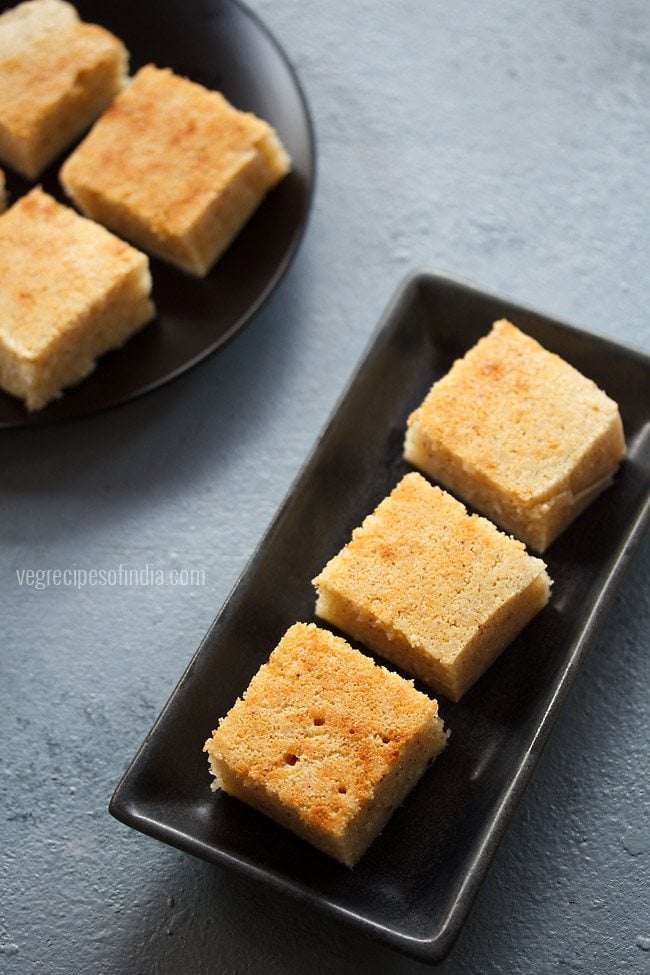
I asked my sister to help me with the recipe as she makes fabulous semolina cakes, both with eggs and eggless ones. She also adds dry fruits and nuts, but I have skipped adding them. You can also decorate the sooji cake with dry fruits of your choice.
How to make Rava Cake
Prep
1. In a grinder jar, take 1.5 cups tightly packed grated coconut (120 grams).
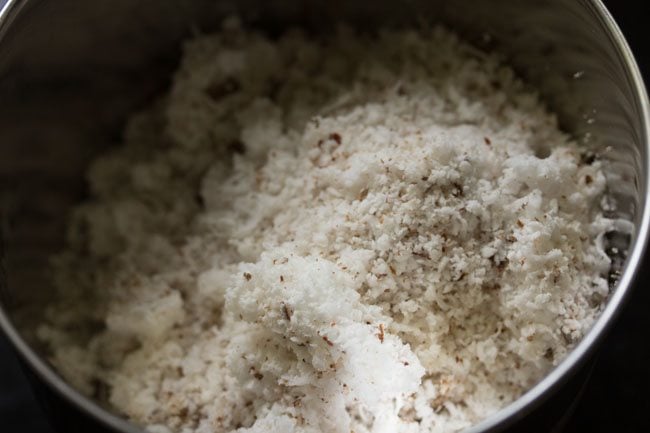
2. Pulse or grind till the coconut becomes fine in texture. Do not add water while grinding. Keep aside.
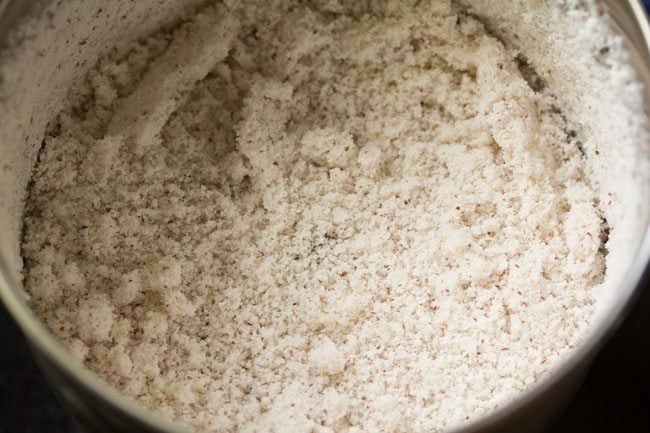
Making Suji Cake Batter
3. Take ½ cup fine rava (barik sooji or cream of wheat or fine semolina – 95 grams rava) in a mixing bowl. The rava should be raw and not roasted.
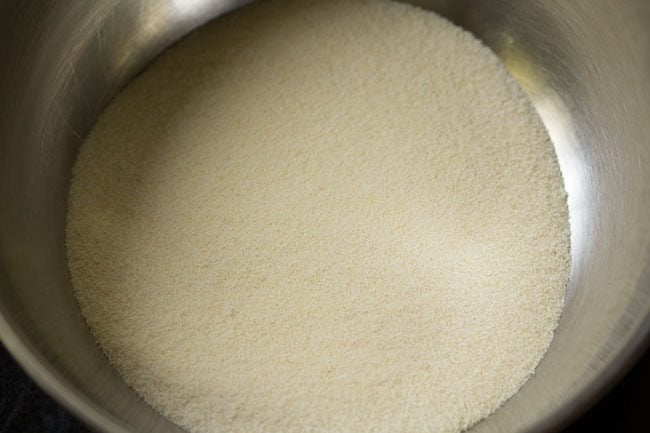
4. Add ½ cup condensed milk.
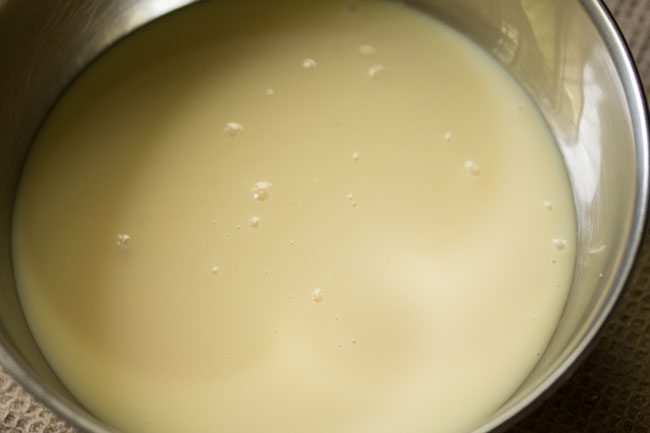
5. Then add the ground coconut.
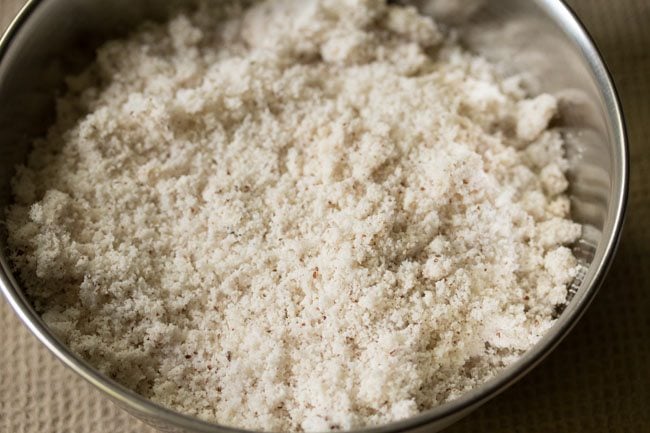
6. Add ½ cup milk.
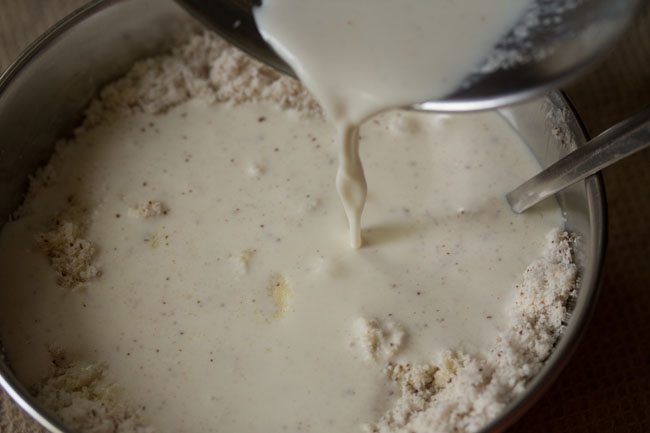
7. Mix very well. The sweetness is right and perfect with the amount of condensed milk added. Do check the taste and if you want some more sweetness, you can add a few tablespoons of sugar and mix so that the sugar dissolves.
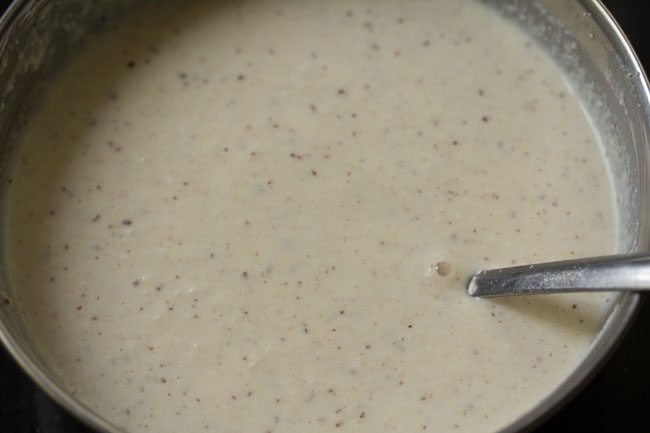
8. Lastly add 1 tablespoon rose water (3 teaspoons). Mix again. Instead of rose water, you can also add ½ teaspoon cardamom powder or 1 teaspoon vanilla extract or ½ teaspoon vanilla essence.
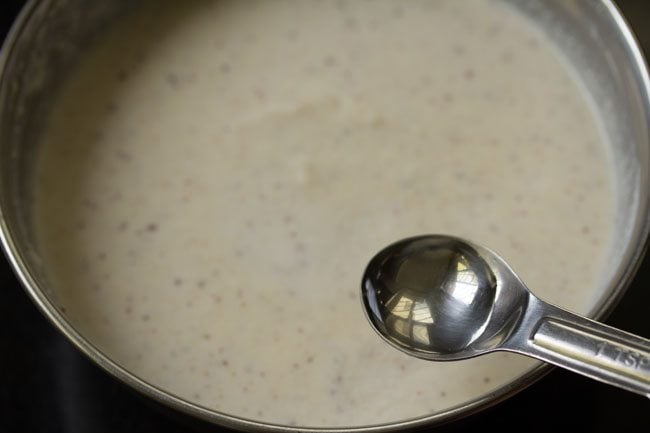
9. Cover the pan with a lid and refrigerate for 1 to 2 hours. You can refrigerate for 7 to 8 hours or overnight.
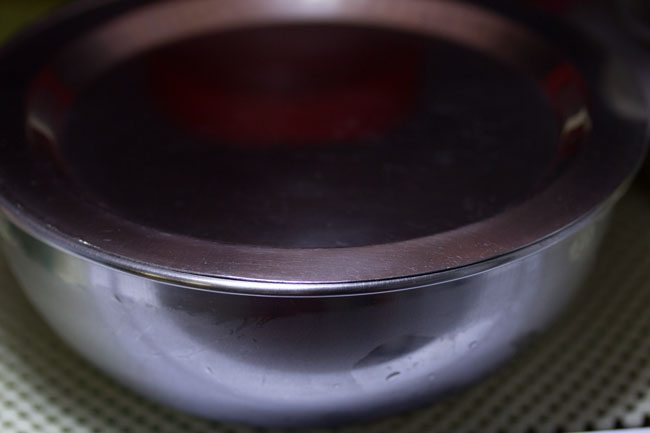
10. I refrigerated the batter overnight. In the below photo you will see that the consistency of the batter is medium-thick but flowing.
If the batter looks very thick, then you can add some more milk. Before you bake the sooji cake, let the batter come to room temperature.
Also preheat the oven at 180 degrees Celsius/356 degrees Fahrenheit for 15 minutes, with both the top and bottom heating elements on.
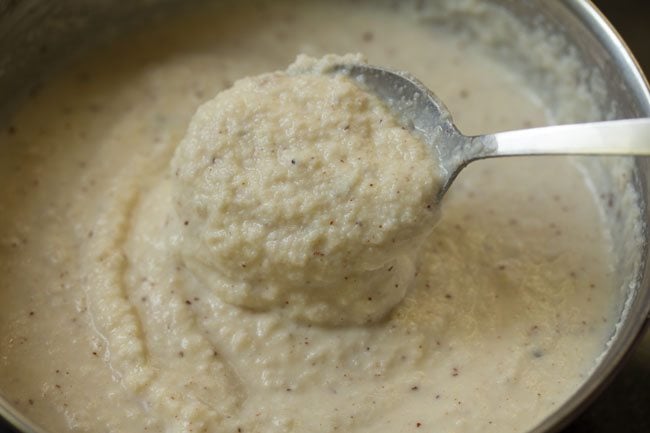
11. Line a 6×6 inches cake tin with parchment paper or butter paper. You can also grease the tin with oil, butter or ghee. You can also use a 5 or 6 inches round pan.
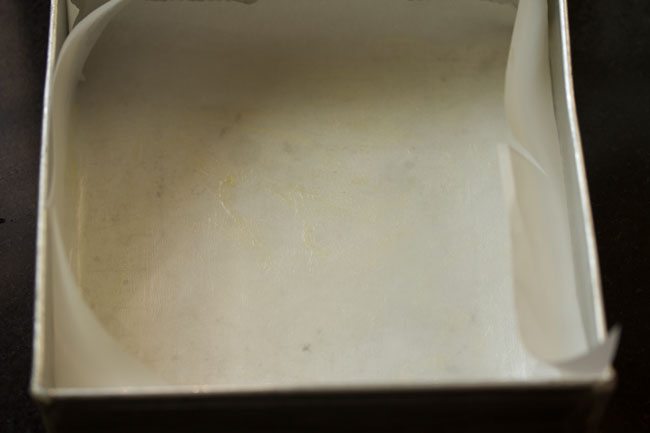
12. After the batter comes to room temperature, add 3 tablespoons ghee. You can also use 3 tablespoons butter or coconut oil or any neutral flavored oil.
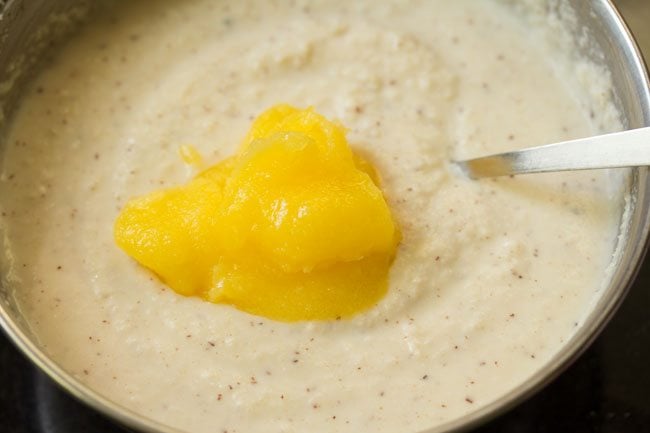
13. Stir and mix thoroughly so that the ghee is mixed evenly with the rest of the batter.
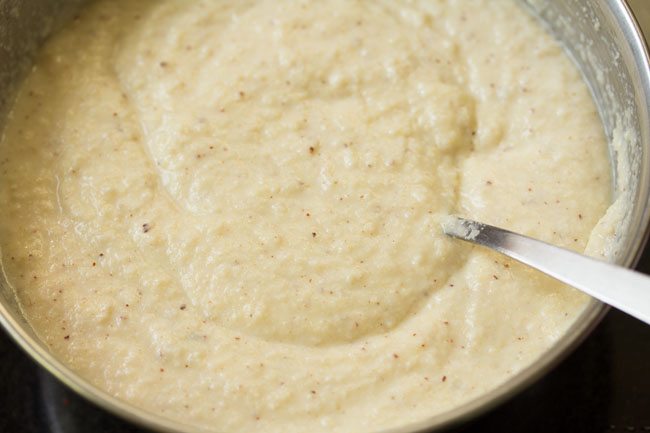
14. Then sprinkle ½ teaspoon baking powder all over the batter. Mix again very well.
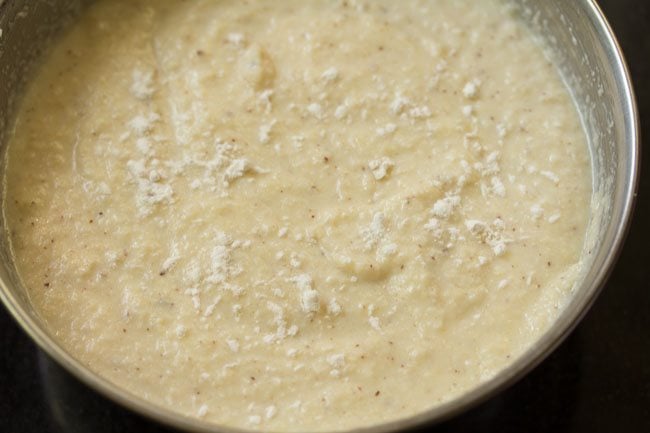
15. Pour the rava cake batter into the pan. Gently shake to even the batter in the pan.
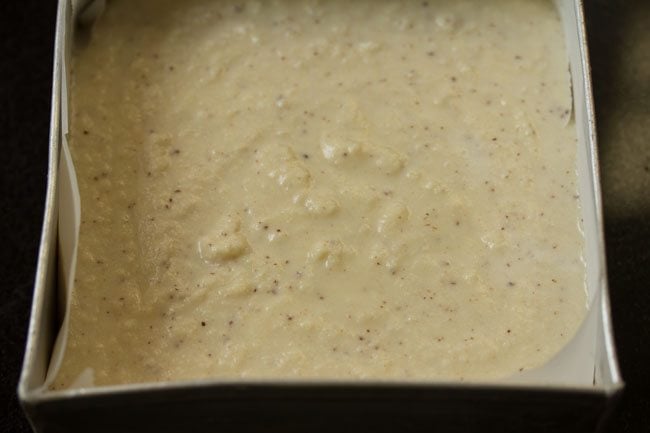
Baking Suji ka Cake
16. Keep in the preheated oven on the centre rack and bake semolina cake at 180 degrees Celsius/356 degrees fahrenheit for 35 to 45 minutes.
In my oven it took 45 minutes to bake. As temperatures varies from oven to oven, do keep a check. It can also take 30 to 40 minutes. Do note that not to overbake this rava cake.
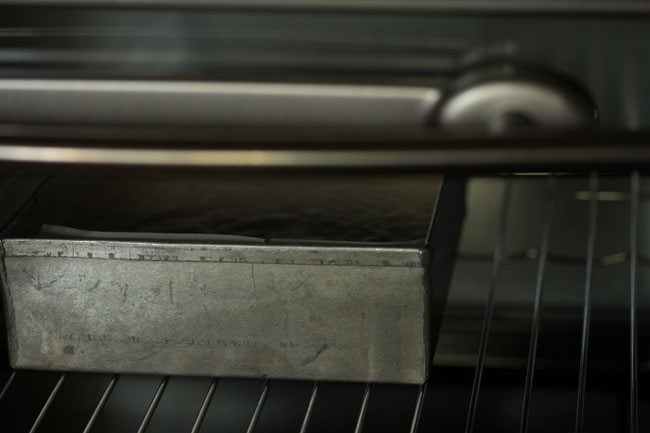
17. Remove and check with a toothpick or a bamboo skewer. It should come out clean without any batter particles sticking to it.
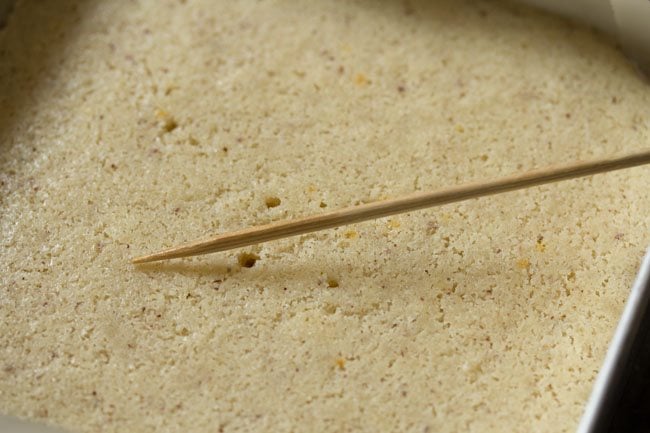
18. If you see, the rava cake is done, but the top is not golden then broil for a few minutes till the top has a golden crust.
In my oven, I face this issue at times. I wanted the top to be golden and slightly crisp, so I placed the pan back in the oven (on the centre rack) and only heated the top element.
Then baked for a further 4 minutes. You have to be careful here as the browning happens fast. If in your oven, the top has got nicely golden, then obviously skip this step.
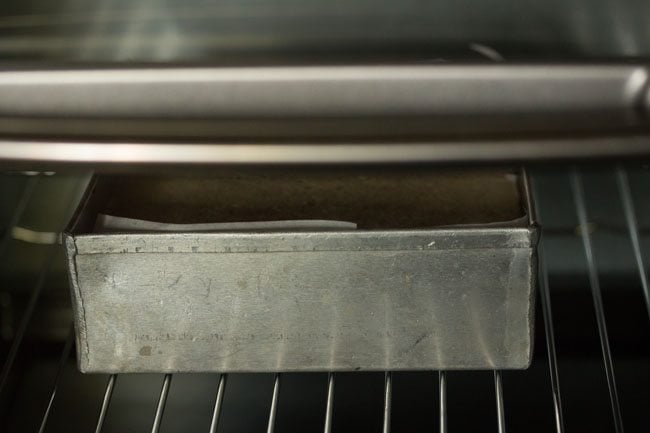
19. So here is a suji ka cake with a nice golden crust.
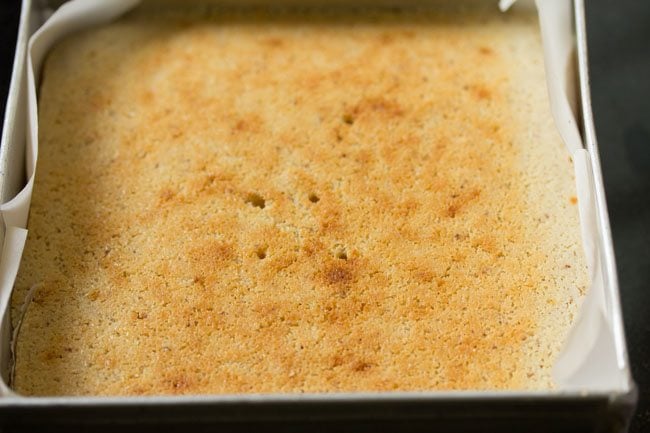
20. Keep the pan on a wired rack for the rava cake to cool at room temperature.
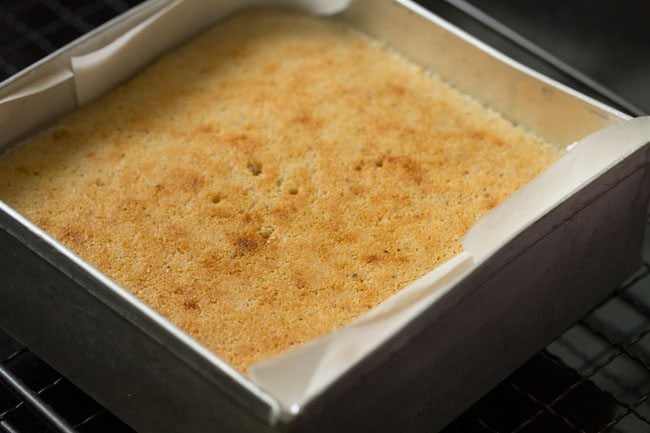
21. Once the rava cake cools, then gently remove it from the pan on a chopping board. Slice the cake and then serve.
You can refrigerate the leftovers. The cake will become dense once refrigerated. So just warm them in the oven or microwave oven and then serve.
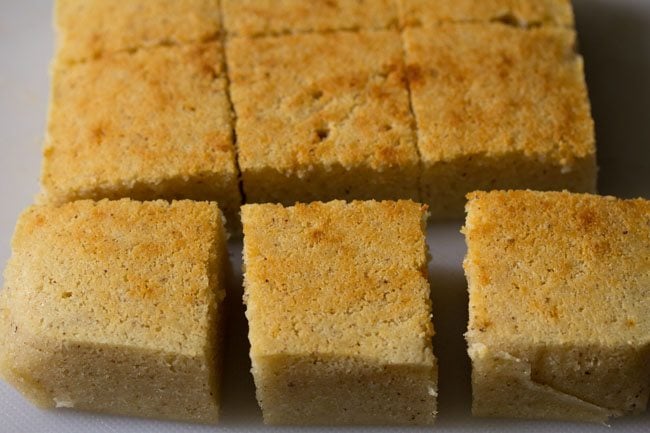
22. Serve rava cake plain as a sweet snack or a dessert. Makes for a good tea time snack.
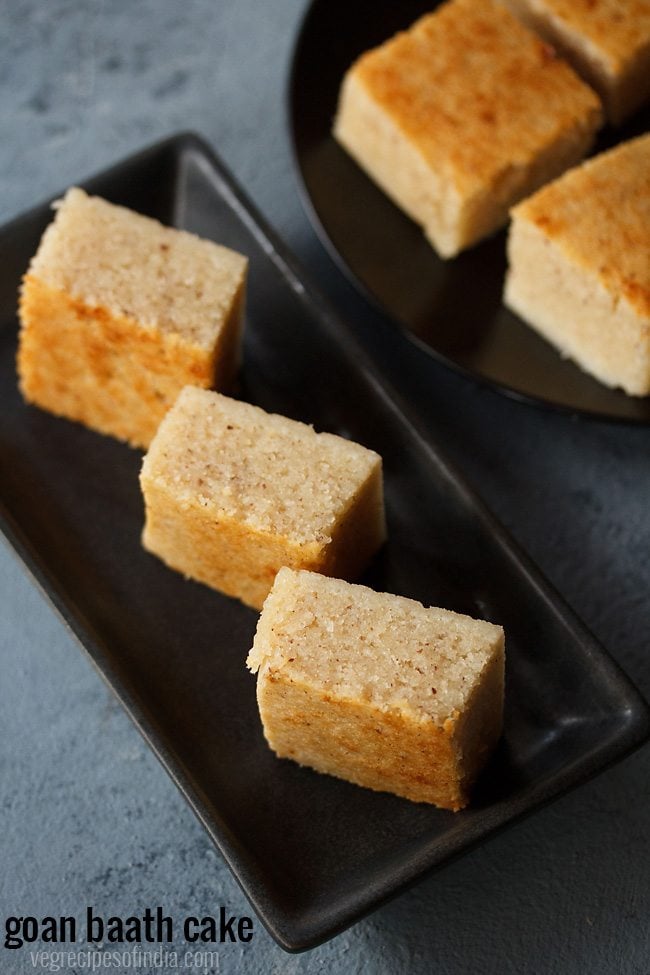
If you are looking for more Eggless cakes recipes then do check:
Please be sure to rate the recipe in the recipe card or leave a comment below if you have made it. For more vegetarian inspirations, Sign Up for my emails or follow me on Instagram, Youtube, Facebook, Pinterest or Twitter.
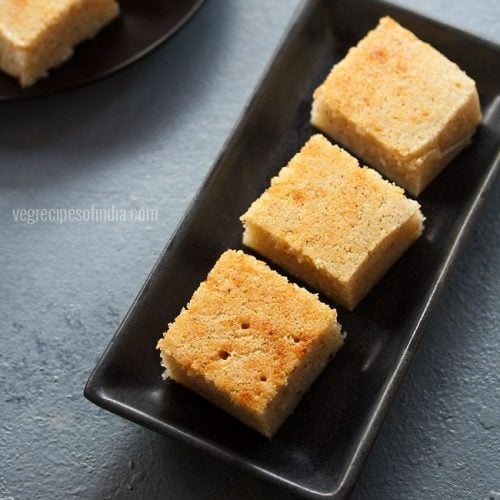
Rava Cake | Suji ka Cake
Ingredients
- ½ cup rava fine and unroasted, (barik sooji or cream of wheat or fine semolina) – 95 grams
- 1.5 cups fresh grated coconut tightly packed – 120 grams
- ½ cup sweetened condensed milk
- ½ cup whole milk
- 1 tablespoon rose water – can add ½ teaspoon cardamom powder or 1 teaspoon vanilla extract
- 3 tablespoons Ghee or butter or oil
- ½ teaspoon baking powder – levelled
Instructions
Making batter
- In a grinder jar, take fresh grated coconut.
- Pulse or grind till the coconut becomes fine in texture. Do not add water while grinding. Keep aside.
- In a mixing bowl, add fine rava, condensed milk, milk, rose water and the ground coconut.
- Mix very well. The sweetness is right and perfect with the amount of condensed milk added. Do check the taste and if you want some more sweetness, you can add a few tablespoons of sugar and mix again.
- Instead of rose water, you can also add cardamom powder or vanilla extract.
- Cover the pan with a lid and refrigerate for minimum of 1 to 2 hours or overnight or for 7 to 8 hours.
- Before you bake rava cake, let the batter come to room temperature. Also preheat oven at 180 degrees Celsius/356 degrees Fahrenheit with both the top and bottom heating elements on.
- Line a cake tin with parchment paper or butter paper. You can also grease the tin with oil, butter or ghee.
- After the batter comes to room temperature, add ghee. You can also use butter or coconut oil or any neutral flavored oil.
- Mix very well so that the ghee is evenly mixed with the batter.
- Then sprinkle baking powder all over the batter. Mix again very well.
Baking rava cake
- Pour the batter in the pan. Gently shake to even the batter in the pan.
- Keep in the preheated oven and bake for 35 to 45 minutes at 180 degrees Celsius/356 degrees Fahrenheit. As temperatures vary from oven to oven, do keep a check. It can also take 30 to 40 minutes. Do note that not to over bake this rava cake.
- Remove and check with a tooth pick or a bamboo skewer. It should come out clean without any batter particles sticking on it.
- Keep the pan on a wired rack for the cake to cool down.
- Once the cake cools down, then gently remove it from the pan on a chopping board. Slice the cake and then serve.
- You can refrigerate the leftovers. The rava cake will become dense once refrigerated. So just warm them in the oven or microwave oven and then serve.
- Serve suji ka cake plain as sweet snack or a dessert or as a tea time snack.
Nutrition Info (Approximate Values)
This Rava Cake post from the archives (December 2016) has been republished and updated on 20 September 2021.
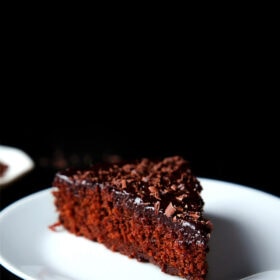
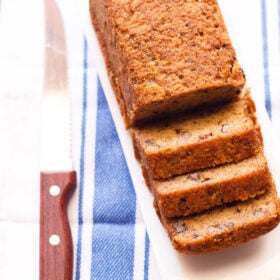
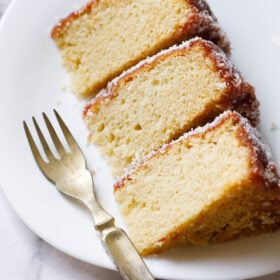
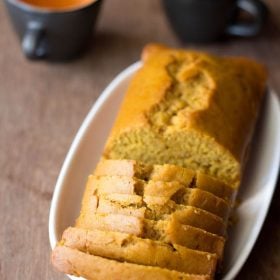








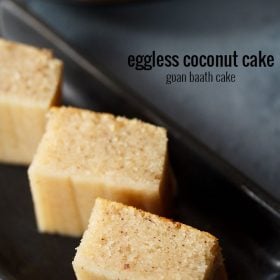
Hi Dassana,
What is the science behind keeping it in the fridge for 7-8 hours? I am at that stage right now and was wondering. Thanks.
The rava soaks the milk and softens. Thus a result you get a nice soft texture in the cake as compared to a gritty or grainy texture. The batter cannot be kept out as it would start fermenting, so to avoid the fermentation and to help the rava soak the milk, the batter is refrigerated.
What you mean by tightly packed cups of coconut – do we press it till the point when pressing down is no longer possible? Also, I used 1 cup of condensed milk, 1 cup of milk , 2 cups of tightly packed cups of coconut and 1/2 cup of rava and still my consistency is thicker than what I see in your pictures. What did I do wrong?
Yes the coconut is pressed tightly but not very tightly. I think since you have changed the proportions and that must be the reason for the thicker consistency. In the proportions you have mentioned, the grated coconut is more and this would have contributed to a thick batter. In this case you can always add some more milk to loosen the batter. I hope this helps.